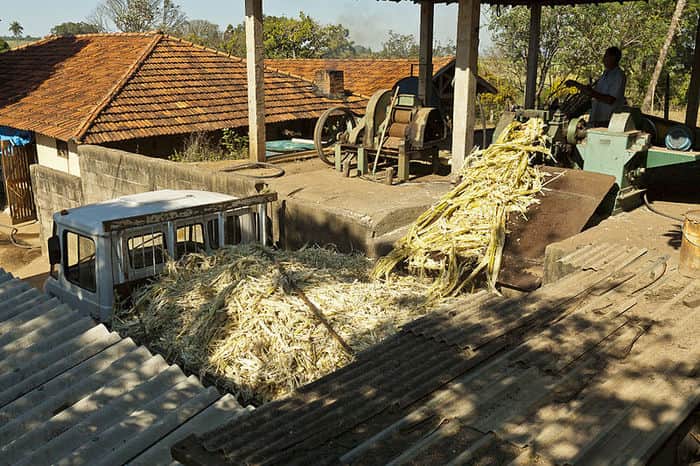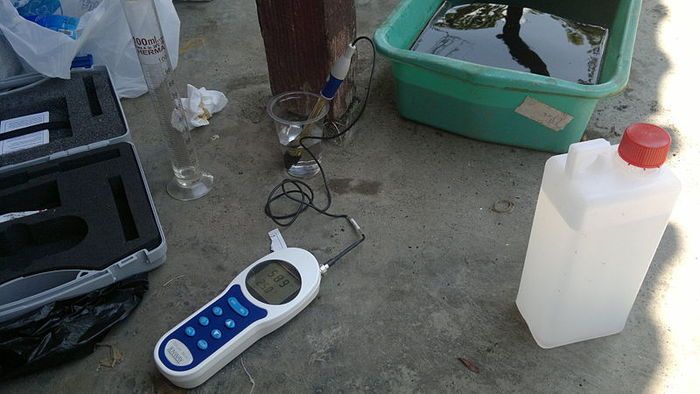Bagasse and Vinasse: Tequila industry and waste generation
This article makes an analysis of the future of the waste generated by the tequila industry, focusing on the use and exploitation of Bagasse and Vinasse.

In the production of tequila, different wastes are generated, each with particular characteristics and different production volumes; two of them are the ones with the greatest impact: bagasse and vinasse. Tequila, one of Mexico's most emblematic beverages and the base of one of the main agro-industries, generates social and economic benefits for the states and municipalities included in the territory covered by its Denomination of Origin; despite this, its production is catalogued as one of the most contaminating industries, due to the large volumes of waste it generates.
Studies show that tequila industry waste can become a source of raw material for obtaining various by-products, as well as a business opportunity. This article analyzes the future of the waste generated by this important industry, focusing on its use and exploitation.
Tequila Production
It is necessary to reflect on the production of large volumes of waste during the process of making this drink, which has as their final destination the soil and water bodies, considered as basic elements of any ecosystem. It is estimated that to produce one liter of tequila, requires between seven and eight kilograms of agave, which are converted into five kilograms of bagasse/wet base (residue), once the juice has been extracted. Tequila production generates different types of waste, each with its specific features and different production volumes; two of them are the ones with the most impact: bagasse and vinasse.
What is bagasse?
This residue is the agave fiber, obtained once the pineapples have been cooked and ground to generate sugars that, during fermentation, will produce alcohol and other chemical compounds, which will be separated in the distillation. Bagasse is fibrous biomass made up of lignocellulosic materials, which is made up of 43% cellulose, 19% hemicellulose, and 15% lignin, in addition to other compounds, a condition that gives it enormous potential for various uses.

Bagasse is used as material to produce organic fertilizer, through composting that is incorporated into the fields as a fertilizer and soil improver, whose benefits are to reduce the use of agrochemicals, prevent soil erosion and prevent plant diseases. This bagasse can also be used as fuel in boilers, to fill in furniture and mattresses, fodder for poultry and cattle, and to make bricks and adobe, among other things. One option in this branch is to obtain some enzymes with high commercial value that can be used in the elaboration of new products.
The production of biofuels has enormous potential, due to the content of hexose that favors fermentative processes, considering that liquid biofuels obtained from lignocellulosic materials will play an important role in the short term as substitutes for fossil fuels.
The vinasse of the tequila industry
Vinasse is the liquid residue obtained after distillation. Its main characteristic is the high concentration of organic material in suspension and a low pH, conditions that are catastrophic when vinasse is poured into the soil or water bodies without previous treatment, contaminating them and ending the productivity and life they sustain. For every liter of tequila produced, an average of ten liters of vinasse is generated; according to production figures, production of 250 million liters of tequila is generated, which represents 2.5 billion liters of vinasse, which are discharged into the drainage system or bodies of water and only a fraction are treated.

Vinasse is a cloudy-brown liquid, because of the high content of suspended solids it contains. It has a characteristic smell of alcohol caramel, similar to that acquired by cooked agave, and is composed, on average, of 90% water and 10% solids. Traditionally, vinasse is poured into water bodies and crop fields, however, the use of vinasse for irrigation has been questioned, since components such as fats and oils are transformed into waxes that form a film capable of waterproofing the soil, preventing water filtration.
Some companies use them in the production of compost, which brings moisture to the process and promotes evaporation. However, periodically watering the vegetation at high temperatures is counterproductive because it breaks the composting cycle, which can be prolonged, making the process costly. Another alternative is the use of evaporators, through which large volumes are treated in a short time; however, this measure is not accepted by some sectors under the argument that, through this process, the water resource is lost at the local level, which has repercussions on the depletion of aquifers.
Due to their characteristics and the high volumes generated, vinasse has become an environmental problem that requires immediate attention given the growth prospects of the sector. Some uses of vinasse, in addition to agriculture, can be glimpsed: second-generation biofuels, their use as a substrate, and the obtaining of some compounds are presented as alternatives for their use. Tequila vinasse has a high potential to be used as a substrate in the production of bioenergy (biogas and hydrogen) and in obtaining materials through biotechnology.
In the case of bagasse, the prospects for a solution are simpler and more economical, in addition to representing a potential source of raw material. The growth of the tequila industry is increasing and with it the generation of waste that, due to its characteristics and volume, requires adequate handling and treatment.
Source: by Juan Gallardo Valdez via Conacyt Thematic Networks Program
He has a degree in Geography from the University of Guadalajara and a Master's degree in Environmental Health Sciences from the same institution. He is currently a Researcher in Environmental Technology at the Ciatej, as well as a Master's in the Department of Geography and Land Management at the University of Guadalajara. This is a shorter extract from the original article in Spanish found here.




